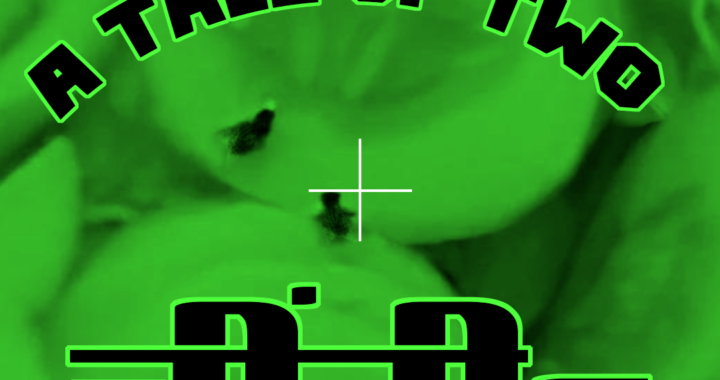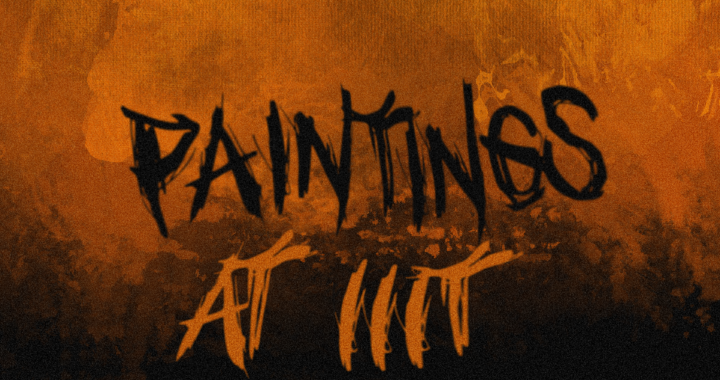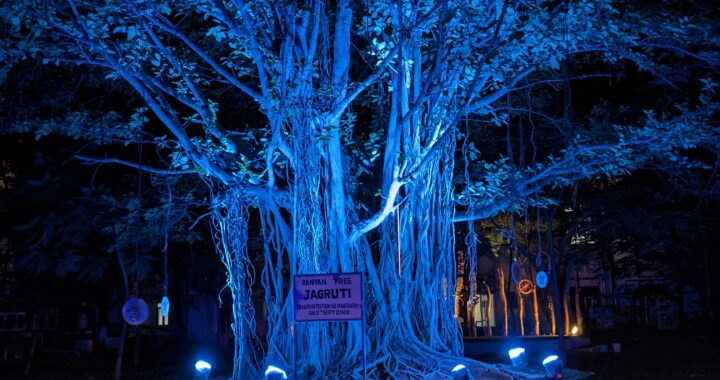Isle of Dogs

Like several people before us, the first thing we noticed when we arrived on campus was the large number of dogs. We did not realise then that they were the subject of some of the most heated debates and discussions on campus. There have been incidents of dog bites, people being chased, dogs pushing down dustbins, licking plates at canteens and snatching food. There have also been complaints about a lot of dogs barking at night disturbing the residents. Each incident sparks a debate that simmers down fast, and all is forgotten till the next incident. This article tries to maintain an objective outlook—keeping emotions towards the dogs themselves aside—of the issues faced by people because of dogs on campus, the history of dealing with these issues, and explores what can be done now.
There is no formal record of dog bites kept anywhere, so we tried to obtain information through a Facebook post asking for details about dog attacks. Thirty-one people were tagged in the comments, however, we could only get proper information from seven of them, four of whom were bitten by dogs. Apart from this we also know from Facebook posts and friends, that at least four more people were bitten in the past two years. People have also had their belongings damaged. Apart from this, there were several incidents around 2014-2017 that were posted on Facebook.
The Beginnings of the Campus Canine-Management Cell (CCC)
Dogs had always been around in campus, but as their number started increasing and the problems caused by them became apparent—predominantly the problem of dogs snatching food from people—it was realised that something had to be done about it.
And thus, CCC was started by Prof. S Roy Choudhury and Prof. Abhijit Mitra in the year 2014 to resolve these problems. At that time CCC was not very serious. After Prof. S Roy Choudhury left, the CCC was mainly managed by Prof. Prabhakar. They proposed feeding dogs at designated places at designated times to control the dogs from snatching peoples’ food at night.
However, it was not until Royal—a dog both awed and feared—started behaving uncontrollably (and with it a few other dogs behaving aggressively as well) that CCC came to imbibe what they say in the introduction page of their website today. (See their goals). At that time in mid-2015, a meeting was called by Prof. Prabhakar due to the large number of dog incidents. A list of around thirty incidents were compiled by Sai Krishna, now an alumnus. Several students and professors attended the meeting.
The Laws
When one searches for what the law says in this regard, it isn’t initially very straightforward whether dogs can be relocated.
In fact, the law that most people cite —Animal Birth Control (Dogs) Rules 2001— does not mention the word relocation or anything related to it.
The Prevention of Cruelty against Animals (1960) law says:
If a person .. without reasonable cause, abandons any animal in circumstances which tender it likely that it will suffer pain by reason of starvation thirst … they shall be punishable by law.
However, according to the Animal Welfare Board of India website, in a document titled ‘Animal Protection Laws for the Guidance Of Police, HAWOs, NGOs AND AWOs’ relocation is not permissible at all, and courts have ordered against relocation multiple times.
‘Under the Govt. of India, Animal Birth Control Rules 2001, no sterilized dogs can be relocated from their area. As per five different High Court orders, sterilized dogs have to remain in their original areas. If the dog is not sterilized, the Society can simply ask an animal welfare organization to sterilize and vaccinate the dog. They cannot relocate them. Relocation is not permissible, as it would cause more problems such as an increase in dog bites as new dogs will move into the area who are unfamiliar with residents and therefore more likely to be hostile.’
Infact, in the same document, they also mention:
While residents and Associations are free to address institutional agencies for redressaI of grievances in this matter, no resident/association will interfere with the freedom of other residents in caring and attending animals. Intimidating in any manner, those who feed and care for animals is a criminal offence. Apart from action under appropriate criminal law, such persons will render themselves liable for action under CCS Conduct Rules.
Achievements of CCC
Given this framework, to achieve the objective of decreasing the population and eventually removing dogs from campus, CCC does the following:
- Vaccinating and sterilising the dogs
- Making sure dogs are fed in order to avoid aggression on account of hunger
- Spreading awareness about common dog behaviour
- Consulting the vet on account of injury or disease
Sterilization, apart from ensuring that dogs cannot reproduce also ensures that dogs are less aggressive, and both dog fights and aggression against human beings decreases. CCC has been somewhat successful in limiting the dogs on campus by sterilizing the ones already on campus and getting puppies adopted (that were born on campus back when the dogs were left unsterilized), and decreasing aggression by feeding the dogs.
People generally complain about sudden surge in population of dogs on campus in past two years but when cross checked with CCC members, the numbers don’t seem to add up. “The net increase of dogs after CCC was established is estimated to be around five and most reports of seemingly drastic increases in the number of dogs are partially false, as the ‘new’ dogs which many people have referred to were just dogs that used to formerly reside in the forest area” says a CCC member.
Limitations
Although CCC is an institute funded body, it is also basically just a group of volunteers (IIIT students moreover, with assignments, exams and whatnot) who get nothing in return for feeding, vaccinating and sterilizing the dogs.
Thus, the CCC is limited in it’s capability to help the situation. While they can be expected to find holes in the campus walls through which dogs may come in and report them to the engineering department (a division of the administration), they cannot be held responsible to get the holes themselves fixed, which would require them to constantly badger the engineering department.
“I have conducted multiple inspections of the campus wall and wherever I spotted holes or breaks in the wall I reported it to the Engineering department and Mr Ramana V.V, Deputy Registrar, General Administration Office. But there is a limit to how much supervision I can do to ensure that these holes are closed. After all, CCC is a voluntary group.” says Shreedhar Manek, who was involved with CCC since its beginnings.
According to Yashas Samaga, another CCC member, when new dogs enter, they are not fed, and non-CCC members are told not to pet them when seen. ‘I don’t think CCC members can do much about it’, he adds.
Similarly, they do try to get the dogs sterilized, but it is a very challenging task and there is little they can do. For example, Whitie, a dog who is most likely pregnant now, kept running into the forest area whenever the sterilization van arrived, and CCC members couldn’t pursue her into the forest for the fear of endangering themselves.
Other Attempts to Reduce Aggression
Last year, Prof. Saswata Shannigrahi sent public emails complaining about defecation of dogs on campus. Soon after, the institute employed Veerappa[note]In an unfortunate unexpected incident, Veerappa passed away recently. [/note], to help clean the defecation, separate dogs during occasional fights, and feed the dogs in the morning. The professor also tried to collect evidence from everyone on how dogs were causing harm to the residents so as to register a complaint with the municipality, but the plan didn’t materialize.
Sai Krishna used ultrasonic dog deterrents (see section on ultrasonic deterrents), and attempted to make them more widespread.
The parliament did not comment on the issue when contacted.
Shortcomings of the CCC
Members of the CCC have been accused of not being sympathetic to those who are afraid of dogs and complain about them, and enforcing their ideals on everyone else. They have also been accused of downplaying issues, and citing laws to close the matter, implying there are no other solutions to problems.
Also, most members of the CCC are dog lovers, and therefore do not empathise with the problems faced by people. The intro talk is generally attractive to dog lovers, and few people join CCC because they dislike dogs, the members atmost want to learn how to live with dogs. And being a voluntary body, there’s no incentive to actively look for solutions to the issues.
While neutered dogs are marked with an ear being snipped, vaccinated dogs cannot be distinguished from dogs that aren’t vaccinated. Unless one is familiar with the campus dogs, they cannot tell the vaccinated ones from those that come in. The collars only signify that a dog is friendly. The CCC says there have been issues with trying to do this. The vaccination was last done on 28 September, 2016.
Most importantly, the CCC does not keep a record of dog attacks on campus, which is why we had to go around asking. If there are mails received, those exist, but there are no clear statistics about the number of dog bites by which dog, and the dog attacks that have taken place.
Possible solutions and Feasibility
Having an accountable committee
While shortcomings of the CCC are valid, the body being made of volunteers is not accountable to anyone. There needs to be an accountable body, either a student body, or part of the administration to take care of issues like dogs coming in through holes in the campus walls, marking vaccinated dogs and recording of incidents. The IIM Ahmedabad administration took the help of the NGO – HSI/India to help with their dog issues.[note] http://www.hsi.org/world/india/news/news/2012/04/ahmedabad_abc_program_040912.html [/note]
Garbage disposal
According to the CCC website, with open garbage bins it is unlikely that a dog will find no food, (and therefore want to stay on campus). The canteens, messes and restaurants in the campus are still lacking in managing their waste disposal systems. The college has recently taken to setting up closed garbage bins on raised platforms, which will prevent the dogs from finding food on campus.
Restricting Dogs to a Part of Campus
This is actually something that is implemented successfully to some extent in some of the bigger university campuses of India. However it is actually quite infeasible to restrict the dogs of IIIT to a particular fenced small area (we can’t afford to designate a significant part of the campus just for dogs) of the campus especially, when you try to address needs of the dogs such as food and water.
Taming of Dogs
Although this seems like an ideal solution, it is a bit expensive. A permanent instructor(s) would have to be present on campus, and dog trainers charge around 2.5-4K a month per dog in India, for a few classes a week.[note]https://www.quora.com/What-do-dog-trainers-charge-in-India[/note] Older dogs are also harder to train.
Usage of Ultrasonic Dog Deterrents
Ultrasonic Dog Deterrents (also known as dog dazers) are equipment that would cost between Rs. 850 to Rs. 1650 that send sounds of certain frequencies that are not audible to humans but produces discomfort in dogs. They are widely used by dog trainers around the world as it is believed to only cause minor discomfort. Also, as such devices are quite small, one can easily carry it in a pocket and dogs will probably not identify that it is the device that is causing the discomfort. Thus the negative reinforcement will be associated with the user themselves and so, after using it for some time, it may not be required to use it any more. Thus, it has been suggested that use of ultrasonic lasers by just 20-30 people who regularly go out in the night or early morning would be enough to prevent dogs coming towards humans.
Author Opinion
The main conflict between the CCC and the supposed “Dog Haters” is that several members of the CCC truly believe in the law that prevents dislocation of dogs. They believe that it is the right of the dogs to stay on campus and that if the students have a problem, they should dislocate themselves. Several members of the CCC see themselves as the crusaders of animal rights. As this is more of a ethical conflict than a logical one, the debate has been going on for years with no end in sight.

 Cleaning up the Mess?
Cleaning up the Mess?  The Mess-y Situation
The Mess-y Situation  Qu’ils mangent de la grenouille! (Let Them Eat Frogs!)
Qu’ils mangent de la grenouille! (Let Them Eat Frogs!)  Tale of Two Cheenties
Tale of Two Cheenties  Peace of mind.
Peace of mind.  Boats and Valorant
Boats and Valorant  A perspective on sports in IIIT
A perspective on sports in IIIT  Paintings of IIIT
Paintings of IIIT  The Tale of Jagruti
The Tale of Jagruti
2 thoughts on “Isle of Dogs”
Comments are closed.